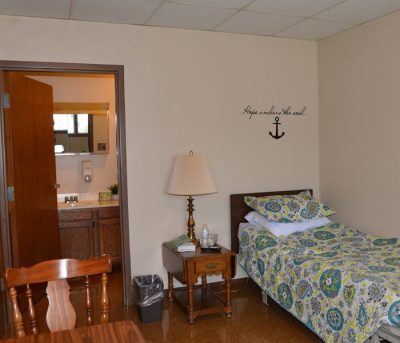 One of the critical factors in causing substance use disorders, and also sustaining sobriety once you’ve completed a rehab course, is the environment you’re in. Often, those who find themselves struggling with this disease have been exposed to situations where drug and alcohol use is normalized. Whether this started as a child or in your later years, the effect can be just as detrimental.
One of the critical factors in causing substance use disorders, and also sustaining sobriety once you’ve completed a rehab course, is the environment you’re in. Often, those who find themselves struggling with this disease have been exposed to situations where drug and alcohol use is normalized. Whether this started as a child or in your later years, the effect can be just as detrimental.
Destructive environments may not even involve substance use; they may be psychologically damaging or contain too many triggers to return to after treatment. It’s essential that you recognize if this applies to you, because even the most motivated individuals can be derailed by the lack of a stable or substance-free living space. In these cases, sober residential living may be the best option for you.
What’s the Difference Between Sober Living and Halfway Houses?
These two types of aftercare have a lot in common, as they both provide a safe and clean space for people to transition from inpatient care who aren’t ready to return home. They offer a sense of community and vital support required for people working towards lifelong sobriety.
Halfway Houses
A halfway house is often state-operated and dorm-like, with many beds instead of individual rooms. This type of living arrangement can be very cheap due to the fact they have fewer amenities and less supervision or staff with fewer qualifications. The days won’t be as structured, and privacy may be an issue for some residents.
Sober Living Houses
An addiction treatment center often runs sober living. When you’ve just finished rehab, consistency can be hugely beneficial. Choosing an affiliated sober residency gives you the option of continued care that links into the course you’ve completed. Dry living spaces are similar to apartment living or a shared house with the added benefit of supervision and structured days that focus on reintegrating into the outside world.
The History of Halfway and Sober Living Houses
Halfway houses date back to the 1700s in England. They were opened to house young people who had committed crimes. In the United States, halfway houses were used to house individuals who had just finished a stint in prison. Those who stay in a halfway house have still usually been court-ordered to stay there.
Residential sober living dates back to around 1830 and began as organizations with religious associations. They were initially sober hotels where the residents stayed to recover from alcohol dependence. Since then, they have evolved to be more structured and focus on getting residents back to work and continue learning coping skills to enhance their chance of long-term recovery.
When Should You Move into a Sober Living House?
We reserve transitional housing for those who have just finished a stay in inpatient rehab. For many people who are coming to the end of their residential treatment, the thought of going straight back to their old life can be scary. You’re aware that you’ll once again face the risk of exposure to many of the reasons you began to use drugs or alcohol in the first place. Sober living provides transitional care and continues the process of helping you to change your lifestyle to one that is conducive to sobriety.
What Happens in Residential Sober Living Homes?
Sober living aims to help alleviate your fears and concerns about going from a monitored, routine-focused rehab center to ordinary daily life. Early recovery is arguably the most challenging time, and these residential options provide a safe, trigger-free living scenario.
 You’ll have much more independence than in inpatient rehab and are allowed to come and go as you please. There are still rules, group meetings and curfews, but you’re able to go about your day-to-day life normally. Staff help to emphasize the importance of a support network, and your fellow residents help you to stay sober as you support them.
You’ll have much more independence than in inpatient rehab and are allowed to come and go as you please. There are still rules, group meetings and curfews, but you’re able to go about your day-to-day life normally. Staff help to emphasize the importance of a support network, and your fellow residents help you to stay sober as you support them.
The mixture of freedom and structure is the ideal way to prevent the shock and isolation that’s felt when you go from being supervised 24 hours a day and surrounded by like-minded individuals to your “old life.” Meetings and guidance are usually centered around:
- Adjusting to being sober in a less structured living space
- Finding employment
- Locating suitable housing
- Building bridges with friends and family members
What Is the Cost of Sober Living?
This type of arrangement is usually a similar price to mid-range apartment living. Rent usually covers utilities, and you have access to resources, support and professional care that have your best interests at heart.
How to Succeed in Transitional Housing
The most important contributing factors to success in transitional housing are sticking to the guidelines and maintaining a can-do attitude. Rules and routines are implemented to show you how important these aspects of life are for everyone. It’s not only people who are in recovery who need to have structure in their lives, but you’ll also notice that all healthy people have it in their daily existence.
Take advice from the support network you’re privileged to have in a sober living home, including housemates, counselors and meetings.
The Importance of Long-Term Treatment
Unfortunately, many people make the mistake of thinking that detox and rehab are a cure for substance use disorders. While it’s the perfect starting point, you need to continue learning to understand your triggers and strengthening your alternative coping mechanisms for years to come. If you’re worried the shock of going straight from inpatient rehab to your ordinary life is going to be too much, we advise you to inquire about the sober living arrangements available to you.
To find out more about residential sober living, get in touch with New Day Recovery at 330-886-4744 to speak to an addiction expert about whether it’s the best next step for you.




